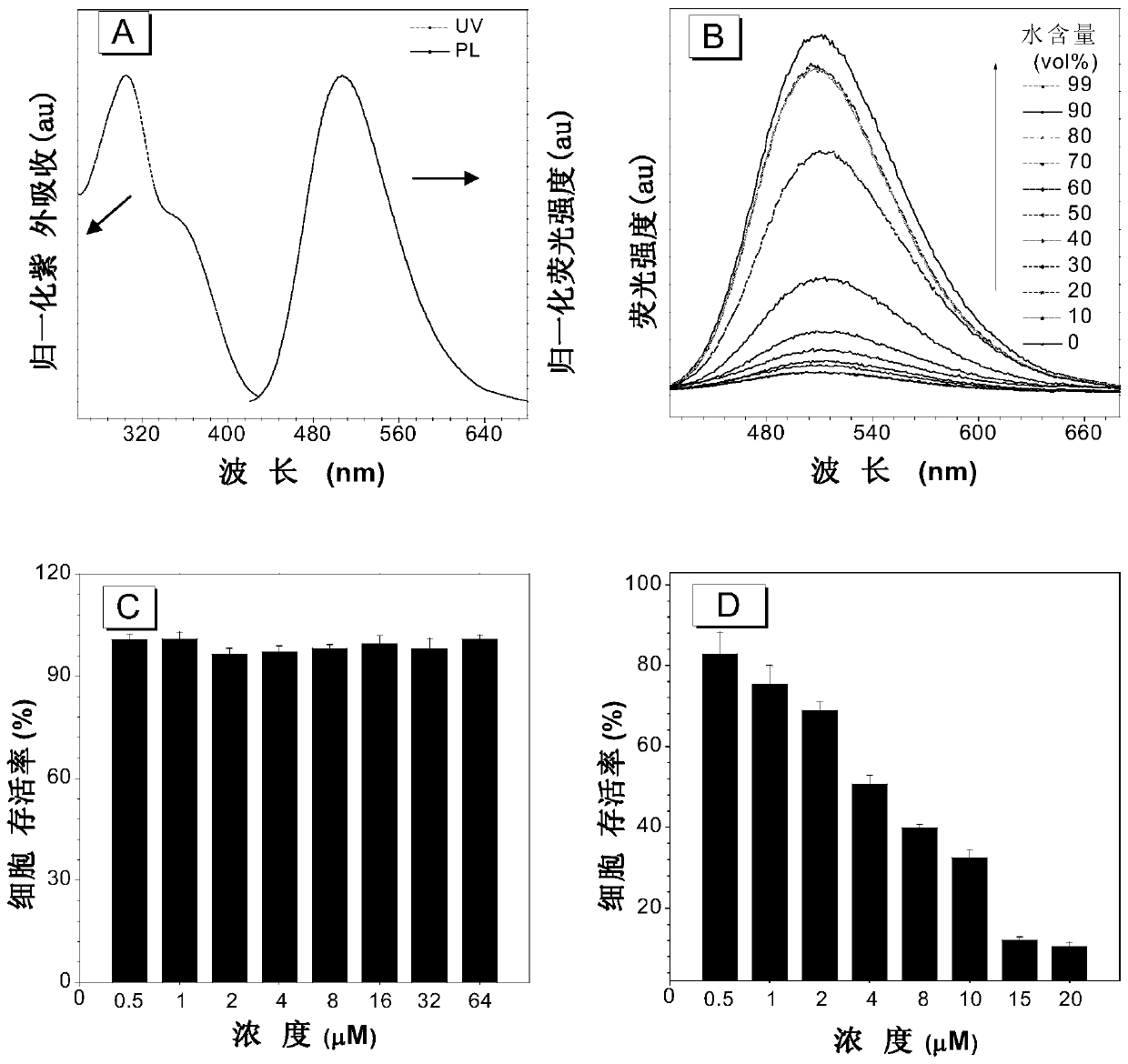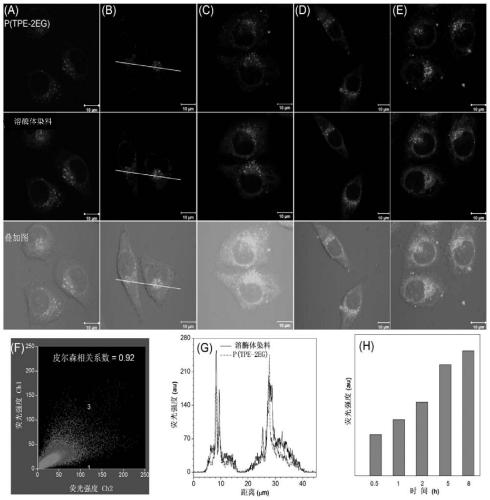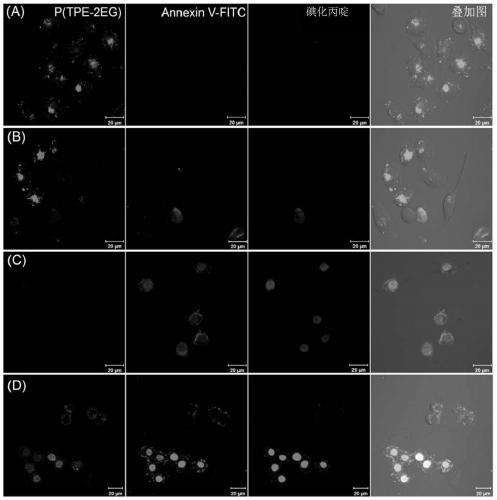Conjugated polymer with aggregation-induced luminescent properties, preparation method and use thereof
A technology of aggregation-induced luminescence and conjugated polymers, which is applied in the field of polymer materials, can solve the problems of poor structural diversity and modifiability compared with polymer systems, and difficulties in realizing functional small molecule systems, and achieve good biocompatibility and high biocompatibility. Selective, high-sensitivity effects
- Summary
- Abstract
- Description
- Claims
- Application Information
AI Technical Summary
Problems solved by technology
Method used
Image
Examples
Embodiment 1
[0055] Preparation of conjugated polymer (polymer P(TPE-2EG)) with aggregation-induced luminescence properties: the reaction equation is as follows:
[0056]
[0057] (1) Synthesis of compound 3
[0058] Compound 1 (0.27g, 1mmol) and potassium carbonate (0.28mg, 2mmol) were added to a 100mL two-neck flask, dissolved in 20mL of acetone, and then compound 2 (0.82g, 3mmol) and a catalytic amount (about 10mg) of octadecine Six (18-crown-6), heated to reflux overnight (12h). After the reaction is cooled to room temperature, pour into the water phase to quench the reaction, and extract three times with dichloromethane, combine the organic phase and wash the organic phase with water three times, dry and filter with anhydrous magnesium sulfate, spin off the solvent, and use petroleum ether / acetic acid Ethyl ester (3 / 1, v / v) was used as eluent, and the white solid compound 3 was obtained by column separation with a yield of 81% (0.307g).
[0059] 1 H NMR (500MHz, CDCl 3 ):δ7.79(...
Embodiment 2
[0069] Preparation of conjugated polymer (polymer P2) with aggregation-induced luminescence properties: the reaction equation is as follows:
[0070]
[0071] (1) Synthesis of Compound 6
[0072] Add compound 1 (0.27g, 1mmol) and potassium carbonate (0.28mg, 2mmol) into a 100mL two-neck flask, dissolve it with 20mL of acetone, add compound 5 (0.9g, 3mmol) and a catalytic amount of octadecadecanohexa (18- crown-6), heated to reflux overnight (12h); after the reaction was cooled to room temperature, poured into the water phase to quench the reaction, and extracted three times with dichloromethane, combined the organic phase and then washed the organic phase with water three times, and washed the organic phase with anhydrous magnesium sulfate After drying and filtering, the solvent was spun off, and petroleum ether / ethyl acetate (3 / 1, v / v) was used as the eluent, and the white solid compound 6 was obtained by column separation with a yield of 75% (0.321g).
[0073] (2) Synthe...
Embodiment 3
[0077] Example 3: Specific detection and cytotoxicity detection of live cells
[0078] (1) Cytotoxicity detection: HeLa cells were cultured for 24 hours in medium (DMEM (10% FBS) co-cultivation of polymer P (TPE-2EG)) containing different concentrations of polymer P (TPE-2EG), The concentration of P(TPE-2EG) was 0, 1, 2, 4, 8, 16, 32, 64μM, and the cell viability was measured. The test results were as follows: figure 1 as shown in (C); figure 1 (C) is a histogram of the cell viability of HeLa cells cultured in medium containing different concentrations of P(TPE-2EG) for 24 hours;
[0079] HeLa cells were cultured for 24 hours in media containing different concentrations of calcein. The concentrations of calcein were 0, 0.5, 1, 2, 4, 8, 10, 15, and 20 μM, and the cell viability was measured. The test results were as follows: figure 1 Shown in (D); 1 (D) is a histogram of the cell viability of HeLa cells cultured in media containing different concentrations of calcein for 24 h...
PUM
 Login to View More
Login to View More Abstract
Description
Claims
Application Information
 Login to View More
Login to View More - R&D
- Intellectual Property
- Life Sciences
- Materials
- Tech Scout
- Unparalleled Data Quality
- Higher Quality Content
- 60% Fewer Hallucinations
Browse by: Latest US Patents, China's latest patents, Technical Efficacy Thesaurus, Application Domain, Technology Topic, Popular Technical Reports.
© 2025 PatSnap. All rights reserved.Legal|Privacy policy|Modern Slavery Act Transparency Statement|Sitemap|About US| Contact US: help@patsnap.com



